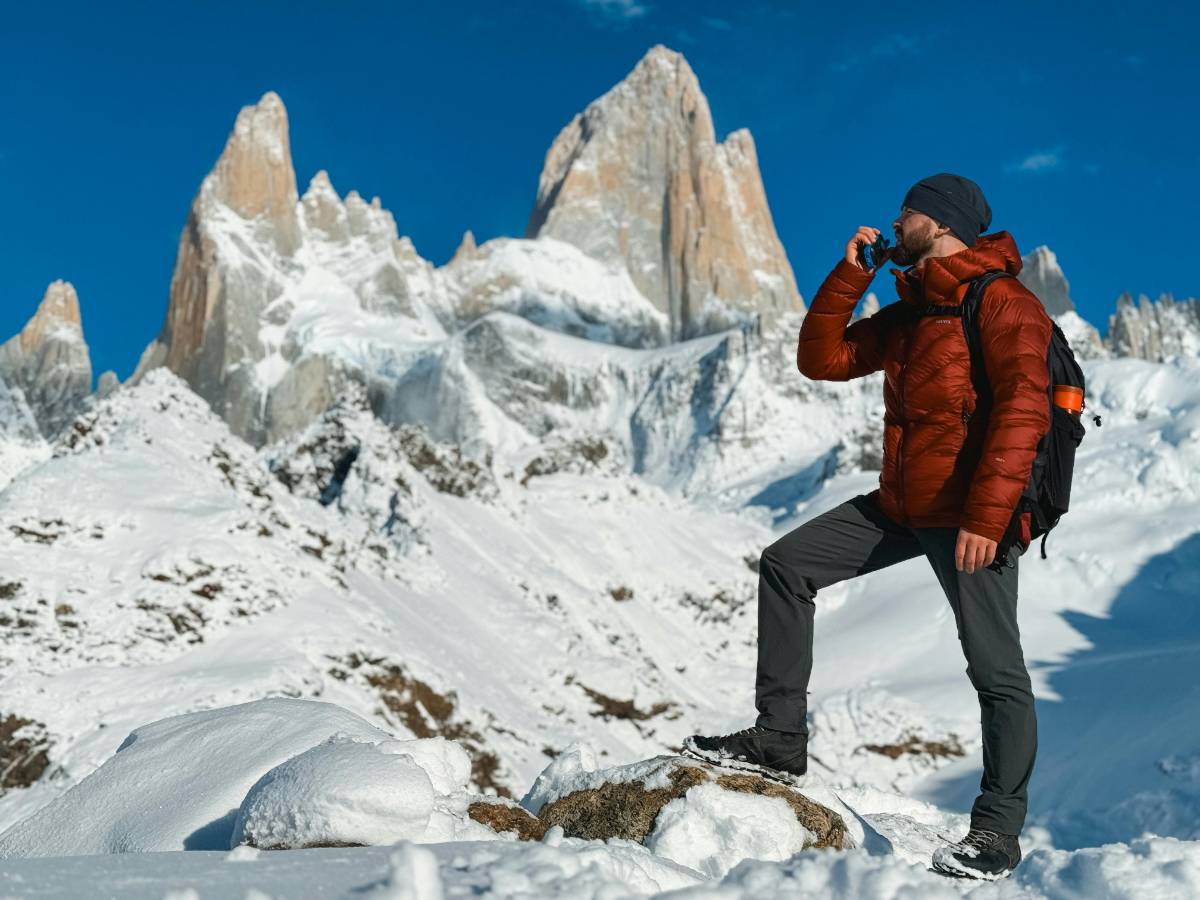
South America is vast, and the best way to explore it is with a well-thought-out plan. Consider the time you have available and the kind of experiences you want to have—whether it's exploring vibrant cities, hiking through mountains, or experiencing remote rural areas.
By Christopher David Wilson · 06 Aug 2025
South America offers an exciting blend of culture, history, and natural beauty, making it a top destination for backpackers. From the jungles of the Amazon to the peaks of the Andes, this continent is packed with adventure. Whether you're traveling for a few weeks or a few months, here are some tips and must-visit locations to make your backpacking trip across South America unforgettable.
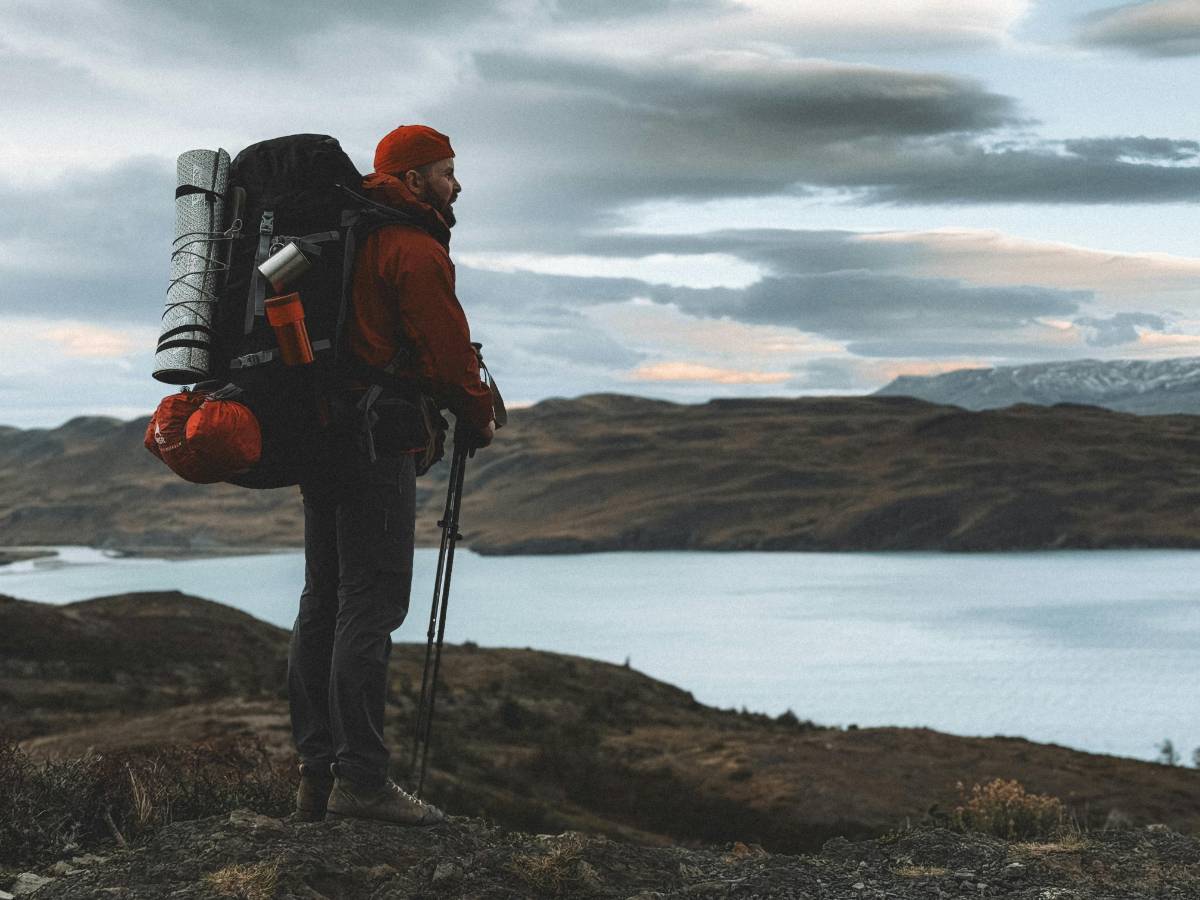 Plan Your Route Carefully
Plan Your Route CarefullySouth America is vast, and the best way to explore it is with a well-thought-out plan. Consider the time you have available and the kind of experiences you want to have—whether it's exploring vibrant cities, hiking through mountains, or experiencing remote rural areas.
Start by deciding on the countries you want to visit. Peru, Argentina, Chile, and Brazil are some of the most popular countries for backpackers. If you have the time, you can also venture into Bolivia, Colombia, Ecuador, and beyond. Planning your route around regional travel hubs like Lima, Buenos Aires, and Santiago will help streamline your journey.
Pack Light and SmartWhen backpacking, packing light is key. You'll be carrying your belongings through various environments, from humid rainforests to cold mountain climates, so bring versatile clothing that can be layered. Focus on packing light, practical items such as sturdy shoes for hiking, a rain jacket, sunscreen, and a hat for sun protection.
Additionally, a good-quality backpack, lightweight camping gear, and a portable charger will make your journey more comfortable. Don’t forget to bring a first-aid kit, especially if you’re trekking through remote areas. And be mindful of the baggage limits on buses and planes, which may vary between countries.
Machu Picchu is one of South America’s most iconic destinations, and for good reason. The ancient Incan city set in the Andean mountains is a bucket-list experience for any backpacker. Whether you choose to hike the Inca Trail or take the train to the site, the experience of standing among the stone ruins with panoramic views of the surrounding peaks is truly unforgettable.
Don’t forget to book your entry tickets and transportation in advance, especially during peak season, as access to Machu Picchu is limited. Also, try to visit early in the morning or later in the afternoon to avoid the crowds.
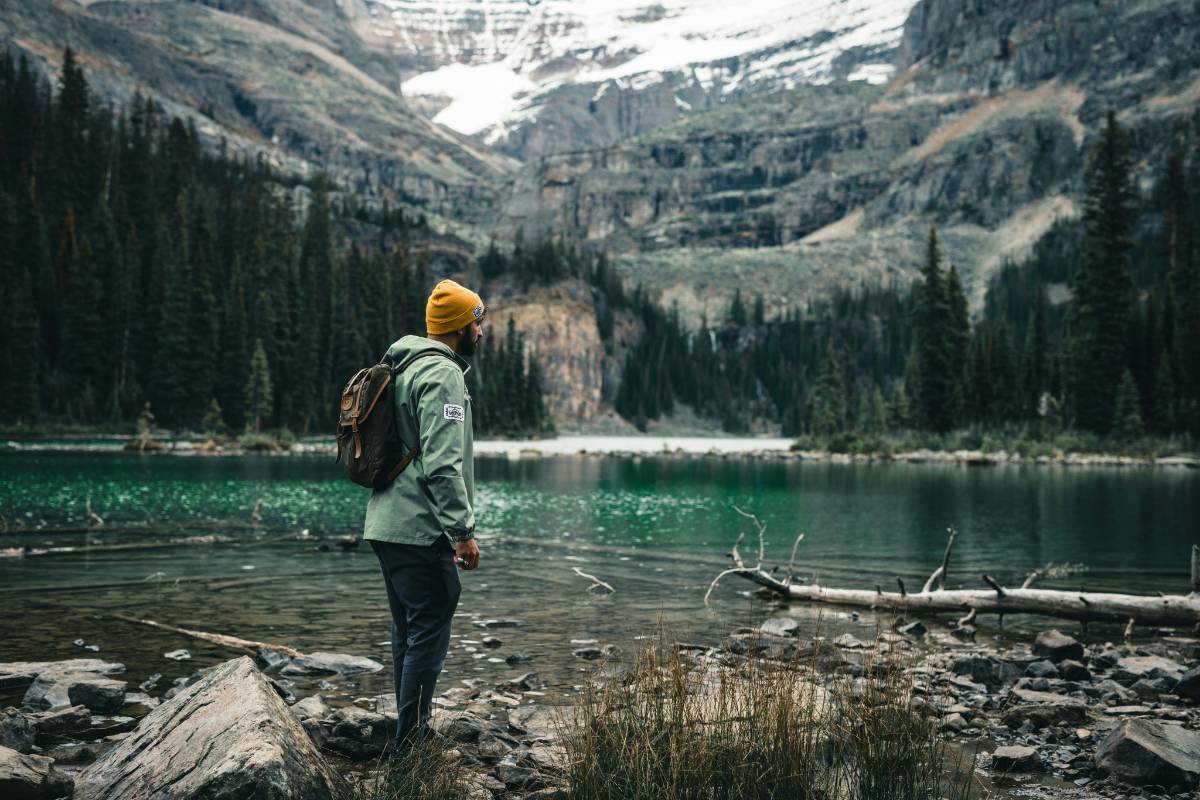
The Salar de Uyuni in Bolivia is the world’s largest salt flat and an essential stop on a South American backpacking trip. It’s a surreal landscape that stretches endlessly, creating the illusion of walking on the sky, especially during the rainy season when the flats turn into a giant mirror.
For a truly unforgettable experience, take a 3-day tour of the salt flats, which includes exploring the flats themselves, as well as nearby attractions like the Eduardo Avaroa National Park, geysers, and hot springs. Be sure to dress in layers, as temperatures can fluctuate dramatically throughout the day.
Rio de Janeiro, BrazilKnown for its vibrant culture, beaches, and the famous Christ the Redeemer statue, Rio de Janeiro is a must-visit for any backpacker. The city's lively atmosphere, stunning landscapes, and world-class nightlife make it an exciting stop on your South American journey.
Take a hike up to Sugarloaf Mountain for breathtaking views of the city, or spend a day lounging on the iconic Copacabana or Ipanema beach. If you’re visiting during Carnival, don’t miss the chance to experience this spectacular event filled with music, dancing, and parades.
Patagonia, Argentina & ChileIf you’re looking for dramatic landscapes and outdoor adventure, Patagonia should be at the top of your list. This region at the southern tip of South America is famous for its stunning national parks, glaciers, and towering peaks.
Trek the famous W Circuit in Torres del Paine National Park in Chile or visit Los Glaciares National Park in Argentina, home to the massive Perito Moreno Glacier. Patagonia is perfect for backpackers who enjoy hiking, wildlife spotting, and being immersed in nature. Don’t forget to pack warm clothes, as the weather can be unpredictable, even in summer.
Cartagena, ColombiaCartagena is a charming city on Colombia’s Caribbean coast that offers a mix of history, culture, and stunning beaches. The city is famous for its colonial architecture, cobblestone streets, and vibrant nightlife. Wander through the historic walled city, explore the colorful streets, or relax at one of the nearby beaches.
Cartagena also offers great food, with street vendors selling fresh seafood and local specialties like arepas. Take a boat trip to the nearby Rosario Islands, known for their crystal-clear waters and coral reefs—perfect for snorkeling.
Quito, EcuadorEcuador’s capital, Quito, is a UNESCO World Heritage Site known for its well-preserved colonial architecture and stunning views of the surrounding Andes mountains. The city offers a perfect blend of history, culture, and nature.
Take a stroll through the historic old town, visit the famous Mitad del Mundo (Middle of the World) monument, or take a cable car ride to the top of Pichincha Volcano for panoramic views of the city and beyond. Quito also serves as a great base for exploring nearby natural attractions, such as the Amazon rainforest or the Cotopaxi National Park.
ConclusionSouth America is a backpacker’s paradise, with so much to offer for those willing to venture off the beaten path. From ancient ruins and salt flats to vibrant cities and breathtaking landscapes, the continent provides endless opportunities for adventure. By planning your route carefully, packing smart, and being open to new experiences, you’ll create unforgettable memories on your backpacking journey across South America.
Subscribe to our newsletter to get our newest articles instantly!

Senior Contributor
Christopher David Wilson is passionate about impactful storytelling. With a unique voice and deep insights, they turn everyday stories into compelling reads that resonate and inform.
Read Full Bio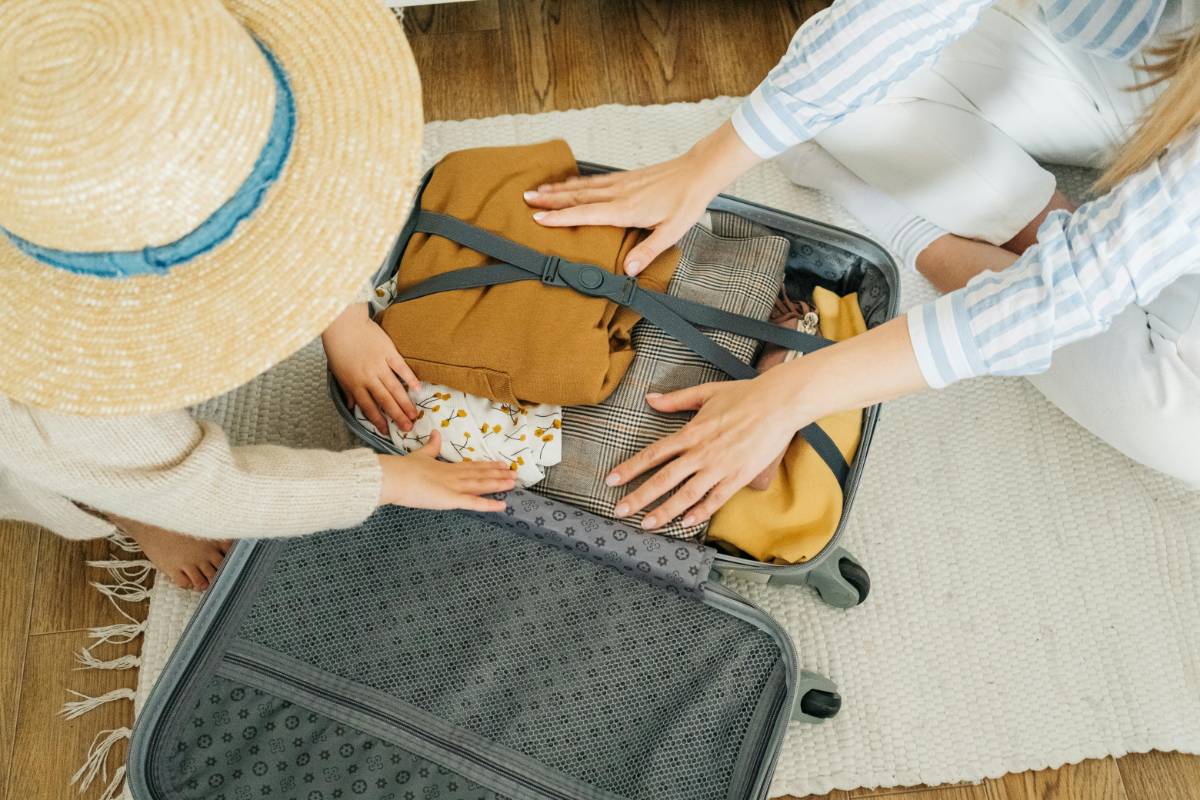
Traveling with kids can be a fun and rewarding experience, but it also requires extra planning and preparation. With a little strategy and creativity, you can ensure that your trip goes smoothly for the whole family. Here are some valuable tips for traveling with children of all ages, ensuring a seamless travel experience that everyone will remember fondly.1161a.jpg***Planning and Preparation are KeyOne of the most important aspects of traveling with kids is advanced planning. Begin by researching your destination thoroughly. Look into kid-friendly accommodations, such as hotels with pools, family suites, or places with kitchenettes where you can prepare simple meals. Additionally, check out local attractions and events that are suitable for children to ensure everyone has an enjoyable experience.Planning your journey also involves determining the best mode of travel. Depending on the distance and your children’s ages, flying might be the best option, or you could opt for a road trip if you prefer flexibility. When flying, check out airlines that provide extra comfort for families, like kid-friendly amenities, priority boarding, and free entertainment.***Packing the EssentialsWhen traveling with children, packing efficiently is crucial. Be sure to bring all the necessities like clothing, toiletries, and any medical supplies, but don't forget the comfort items that will help your child feel secure. This could include a favorite blanket, a stuffed animal, or any other item that will make them feel at ease during the journey.Consider packing snacks and drinks that your kids enjoy, but also those that will keep them full and energized. Snacks like granola bars, fruit, or crackers are great for long flights or road trips. If your child is still young, bring baby food or formula. Don’t forget a portable water bottle to keep them hydrated, and consider bringing a few healthy snacks that are easy to pack but nutritious.Make sure to pack extra clothing for your child in case of accidents. Long flights, car rides, or unpredictable weather can lead to messy situations, so it’s always a good idea to be prepared with a fresh set of clothes. For parents of infants or toddlers, packing extra diapers, wipes, and a changing mat is essential.***Keeping Kids Engaged and EntertainedTraveling with young children can be challenging, especially during long periods of waiting or long journeys. Keeping them entertained is key to a smooth trip. For toddlers and young kids, bringing their favorite toys, books, or games can help pass the time. Simple toys like blocks, action figures, or dolls are easy to carry and can be fun for kids throughout the trip.For older children, electronic devices such as tablets, e-readers, or portable gaming systems are fantastic travel companions. Download their favorite apps, games, movies, or TV shows before the trip to ensure they have plenty of options to choose from. Just be sure to pack headphones to keep the noise to a minimum and avoid disturbing other passengers during flights or car rides.1161b.jpgAnother great way to keep kids engaged during travel is by turning the journey into a fun experience. Road trip games like “I Spy,” scavenger hunts, or trivia games are excellent for getting everyone involved. If you’re flying, apps like SkyKids offer a range of child-friendly entertainment options during the flight.***Sticking to RoutineWhen you’re traveling with kids, maintaining some semblance of their daily routine can help reduce stress. While it’s important to adapt to new surroundings, try to stick to regular meal times and nap schedules. Kids thrive on consistency, so if they’re used to eating at a certain time or taking an afternoon nap, try to stick to that as much as possible during your travels.While on vacation, keeping your child's bedtime routine can also help them feel more secure and prevent meltdowns. You might not be able to fully recreate their usual environment, but familiar items like a nightlight, bedtime story, or music playlist can go a long way in easing them into their temporary surroundings.***Expect the UnexpectedEven the best-laid travel plans can encounter unforeseen bumps in the road. Whether it’s a delayed flight, an upset stomach, or an unexpected change in plans, things won’t always go according to the itinerary. This is why flexibility and patience are key when traveling with kids.Before you leave for your trip, ensure you have the necessary emergency contacts, health insurance information, and travel documents readily accessible. It’s also wise to know where the nearest medical facilities are in case of emergencies, particularly when traveling abroad or to unfamiliar locations.Bring a well-stocked first-aid kit that includes essentials like band-aids, pain relievers, anti-nausea medication, and any prescribed medication your child may need. Be sure to check with your pediatrician if your child requires any special travel recommendations or health precautions before your trip.***The Power of Positive ReinforcementTraveling with kids is a learning experience for everyone involved. Celebrate small successes along the way, whether it’s handling a long flight without a tantrum or behaving well during a long car ride. Positive reinforcement, like praise, small rewards, or giving them a sense of accomplishment, can encourage your kids to handle the trip better.This also extends to your kids' involvement in trip planning. Allow them to choose certain activities or restaurants they’d like to experience during the trip. This sense of ownership in the trip’s outcome can make them more excited and engaged throughout the journey.***Dealing with Travel FatigueTravel fatigue is a reality, especially for young kids. Long days of sightseeing or extended travel times can wear down even the most energetic child. Be mindful of your children’s needs and make sure to plan downtime during your trip. Whether it’s a short nap in the hotel room or some quiet time at the park, rest is essential for maintaining energy levels and preventing frustration or over-stimulation.Make sure to include some relaxed, low-energy activities in your itinerary. Visiting a local museum, enjoying a leisurely walk through a park, or simply spending time in a quiet café can be a welcome break from the hustle and bustle of sightseeing.***Conclusion: Making Family Travel a SuccessTraveling with kids doesn’t have to be a stressful experience. With proper planning, the right attitude, and some patience, your family can enjoy a smooth and fun-filled journey. From packing the essentials to keeping kids entertained and engaged, these tips will help ensure that your family travels are enjoyable for everyone involved. Above all, remember that the journey itself can be just as rewarding as the destination when you approach it as an adventure the whole family can enjoy together.
By Stefen · 05 Aug 2025

Cycling is one of the most rewarding and environmentally friendly ways to explore the world. From the winding roads of Europe to the rugged terrain of South America, some bicycle routes offer breathtaking views, diverse landscapes, and unique cultural experiences. Here are some of the top cycling routes that every avid cyclist should add to their bucket list.1346a.jpg***The Great Divide Mountain Bike Route (USA)The Great Divide Mountain Bike Route (GDMBR) stretches from Banff in Canada to the Mexican border, offering cyclists an epic 2,700-mile adventure through the Rocky Mountains. This is one of the longest off-road bike routes in the world, crossing diverse terrain including rugged mountain passes, remote deserts, and lush forests.This challenging route is perfect for experienced cyclists looking for a true adventure. Along the way, you’ll pass through small towns, encounter wildlife, and enjoy breathtaking views of the Rocky Mountains. The GDMBR is a multi-day journey that requires serious preparation and endurance, but the rewards are well worth the effort.***Camino de Santiago (Spain)The Camino de Santiago, also known as the Way of St. James, is a network of ancient pilgrimage routes leading to the shrine of St. James in Santiago de Compostela. While traditionally walked, cycling the Camino is becoming increasingly popular among cyclists. The route spans about 500 miles from Saint-Jean-Pied-de-Port in France to Santiago de Compostela in Spain.Cycling the Camino offers the chance to immerse yourself in the rich history and culture of Spain. Along the way, you’ll ride through picturesque villages, vineyards, and rolling hills, experiencing both the serenity of nature and the warmth of the local Spanish hospitality.***Munda Biddi Trail (Australia)The Munda Biddi Trail is a 1,000-kilometer off-road bike trail that takes cyclists through the forests of Western Australia. One of the longest continuous off-road cycling trails in the world, it passes through stunning landscapes, including forests, wetlands, and wildlife reserves.Cycling along the Munda Biddi Trail offers an incredible opportunity to explore some of Australia’s most beautiful natural areas. The trail is suitable for intermediate cyclists and offers a mix of easy and challenging terrain. The route also passes through small towns where cyclists can rest, recharge, and enjoy local delicacies.1346b.jpg***The Alpe d'Huez (France)If you’re looking for a challenge, the Alpe d'Huez is one of the most iconic cycling routes in the world. Located in the French Alps, the climb is a favorite among professional cyclists and enthusiasts alike. With 21 hairpin turns, the 13.8-kilometer ascent gains 1,120 meters in elevation and provides breathtaking views of the surrounding mountains.The Alpe d'Huez is part of the Tour de France route and is renowned for its difficulty and rewarding summit views. This climb is perfect for cyclists who want to test their limits while experiencing the beauty of the French Alps.***The Danube Cycle Path (Europe)The Danube Cycle Path, also known as the Donauradweg, is one of Europe’s most popular and scenic cycling routes. Stretching over 1,700 miles, the route follows the Danube River from Germany to the Black Sea, passing through Austria, Hungary, and several other countries along the way.This route offers a blend of history, culture, and natural beauty. Cyclists will pass through historic cities like Vienna, Budapest, and Belgrade, as well as picturesque countryside, vineyards, and quaint villages. The Danube Cycle Path is suitable for cyclists of all levels and offers plenty of opportunities to explore local culture and cuisine.***Ruta 40 (Argentina)Ruta 40 is a legendary route that spans the length of Argentina, from the northern border with Bolivia to the southern tip of Patagonia. This 5,000-kilometer route takes cyclists through a variety of landscapes, from the Andes mountains to the Patagonian steppe.Cycling along Ruta 40 offers a unique way to explore Argentina’s diverse geography and rich cultural heritage. The route is known for its remote beauty and challenging terrain, making it suitable for experienced cyclists who are looking for an adventure off the beaten path.***The Silk Road (Central Asia)For cyclists seeking an exotic and historical adventure, the Silk Road offers an incredible route that spans Central Asia. This ancient trade route stretches from China to the Mediterranean, passing through countries like Kyrgyzstan, Uzbekistan, and Tajikistan. The terrain varies from desert landscapes to mountainous regions, offering a unique challenge for cyclists.Cycling the Silk Road offers the opportunity to experience ancient cities, nomadic cultures, and stunning landscapes. The route is particularly appealing for adventurous cyclists who are looking to explore regions rich in history, culture, and diversity.***ConclusionExploring the world by bicycle is a rewarding way to experience new destinations and cultures while getting active and enjoying the outdoors. Whether you’re cycling through the challenging terrain of the Great Divide Mountain Bike Route or experiencing the cultural richness of the Danube Cycle Path, these top routes offer something for every cyclist. Plan your next adventure today and experience the world from a new perspective.
By John Michael Smith · 14 Aug 2025
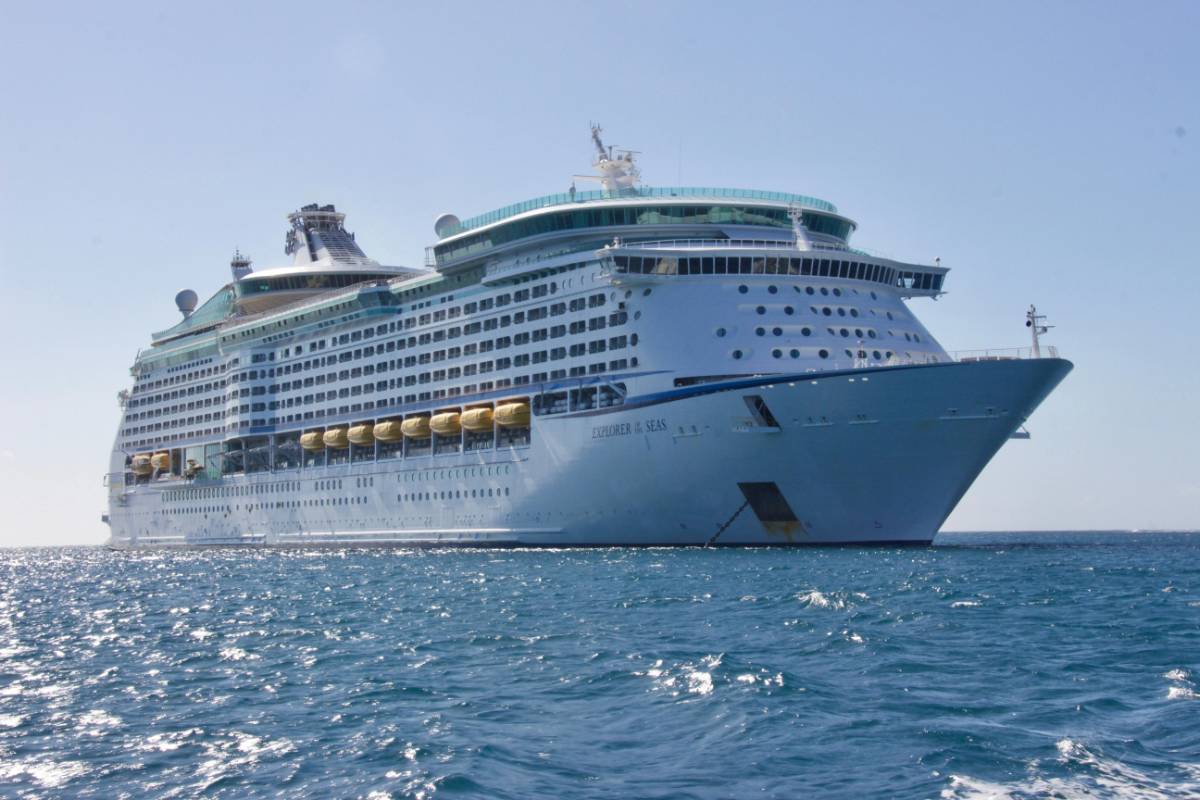
When it comes to traveling by sea, two popular options stand out: luxury cruises and small ship expeditions. Both offer unique experiences, but the choice between the two can depend on your personal preferences and the type of vacation you're looking for. Here's a guide to help you decide which option is the best fit for your next adventure.1310a.jpg***Luxury CruisesLuxury cruises are known for their opulence, large ships, and an all-inclusive experience that offers everything from world-class dining to high-end entertainment. These cruises cater to those who are looking for a more traditional cruise experience, with all the amenities and services expected of a five-star vacation. Here’s what you can expect:Large, elegant ships: Luxury cruise ships are often massive, with a wide range of facilities such as spas, theaters, shopping areas, and pools.Diverse itineraries: Luxury cruises typically offer a variety of itineraries that visit popular tourist destinations around the world, often including a mix of coastal cities and exotic ports.Fine dining and entertainment: On a luxury cruise, guests can enjoy gourmet meals prepared by top chefs and access to a wide range of entertainment options, including Broadway-style shows, live music, and themed parties.Convenience and luxury: Luxury cruises focus on providing exceptional service, with butlers, concierge services, and onboard excursions designed to ensure a stress-free and indulgent experience.***Small Ship ExpeditionsOn the other hand, small ship expeditions offer a more intimate and immersive experience. These ships typically accommodate fewer passengers and are designed to visit more remote or less touristy destinations, often providing a unique and adventurous way to explore the world. Here’s what you can expect from small ship expeditions:Intimate atmosphere: With fewer passengers, small ship expeditions create a more personalized experience. You’ll have a chance to interact with the crew and fellow travelers, creating a close-knit community onboard.Off-the-beaten-path destinations: Small ships can access places that larger cruise ships can’t, such as secluded islands, rugged coastlines, and remote villages. These expeditions often focus on exploration and discovery, making them ideal for adventurers.Unique excursions: Small ship expeditions typically offer more immersive and active excursions, such as kayaking, hiking, or wildlife watching, allowing travelers to get closer to nature and local cultures.Educational experience: Many small ship expeditions focus on providing educational content related to the region you're exploring. Onboard experts, such as naturalists and historians, often lead presentations and excursions to deepen your understanding of the destinations.1310b.jpg***Which One is Right for You?The decision between a luxury cruise and a small ship expedition depends on your personal preferences and what kind of experience you’re looking for. Consider the following factors when making your choice:Comfort vs adventure: If you prefer comfort, luxury cruises provide a high level of relaxation and service. On the other hand, if you're looking for adventure and exploration, small ship expeditions are more suited to those seeking new and off-the-beaten-path experiences.Group size: If you enjoy meeting new people in a lively, larger group setting, a luxury cruise is a great choice. If you prefer a more intimate atmosphere, a small ship expedition will allow you to connect with a smaller group of fellow travelers.Destination preferences: If you’re drawn to popular tourist destinations with high-end amenities, luxury cruises will be your best bet. However, if you’re interested in more remote or exotic locales, small ship expeditions provide access to hidden gems and destinations that are often missed by larger ships.Budget: While luxury cruises can be expensive, small ship expeditions are often priced higher due to the limited capacity and specialized experiences. Consider your budget and the type of trip you’re looking for to determine which option offers the best value.***ConclusionBoth luxury cruises and small ship expeditions offer incredible opportunities to see the world in different ways. Whether you're seeking opulence and comfort or adventure and discovery, the right choice depends on your personal preferences, the destinations you want to visit, and the kind of vacation you're after. Whichever you choose, both options promise unforgettable experiences on the high seas.
By Stefen · 11 Aug 2025

Traveling by air can be one of the most expensive parts of a trip, but with a little bit of planning and strategy, you can significantly reduce the cost of your airfare. Whether you're planning a weekend getaway or an international adventure, there are several insider tips that can help you save money and score the best deals. Here are some expert tips to help budget travelers save on airfare.1303a.jpg***Book Early (But Not Too Early)One of the most common pieces of advice for saving on airfare is to book early. While booking in advance can often result in lower prices, there’s a sweet spot to aim for. For domestic flights, the best time to book is typically 1-3 months before departure. For international flights, try to book 2-6 months in advance. Booking too far in advance or waiting until the last minute can lead to higher prices.Try to avoid booking flights too early or too late, as both can be costly. Track flight prices over time to identify the best time to book.***Be Flexible with Your Travel DatesFlexibility is key when trying to save on airfare. Flights can vary dramatically in price depending on the day of the week, time of day, and time of year. Typically, mid-week flights (Tuesday, Wednesday, and Thursday) are less expensive than weekend flights, as fewer people travel on those days.Consider traveling during off-peak seasons. Avoid popular vacation times like summer, holidays, and school breaks. Flying in the shoulder season or off-season can result in significantly cheaper fares.***Use Fare Comparison Websites and AppsTo find the best airfare deals, use fare comparison websites and apps like Google Flights, Skyscanner, and Kayak. These platforms allow you to compare prices across different airlines and booking sites, helping you find the lowest price available for your chosen route.Set up fare alerts to be notified when prices drop for your desired flight. Many sites and apps offer this feature, allowing you to track fluctuations in ticket prices and book when the price is right.1303b.jpg***Consider Nearby AirportsWhen searching for flights, don’t limit yourself to just the main airport in your destination city. Many major cities have multiple airports, and flying into or out of a secondary airport can save you money. Be sure to factor in transportation costs to and from the airport when considering this option.For example, if you’re flying into New York City, check flights to airports like LaGuardia, JFK, or Newark. A flight into one airport may be cheaper, even after accounting for the cost of ground transportation to your accommodation.***Fly on Budget AirlinesBudget airlines like Southwest, Ryanair, and Spirit often offer significantly cheaper fares compared to traditional carriers. While these airlines may charge for extras like checked luggage, seat selection, and snacks, they can still be a cost-effective option for budget-conscious travelers.Keep an eye out for flash sales and promotions from budget airlines. Signing up for their email newsletters or following them on social media can help you stay informed about special deals and discounts.***Use Airline Miles and PointsIf you’re a frequent traveler, using airline miles or credit card points can be a great way to save on airfare. Many credit cards offer travel rewards that can be redeemed for flights, hotel stays, and more.Sign up for frequent flyer programs with airlines to accumulate miles that can be redeemed for future flights. Even if you don’t fly often, you can still take advantage of credit card reward programs to earn points toward flights.***Book Connecting Flights Instead of NonstopNonstop flights are often more convenient, but they can also be more expensive. If you're willing to add a little extra time to your trip, consider booking a connecting flight instead of a direct route. Connecting flights can be cheaper, especially if you have flexibility with your travel time and destinations.Check different layover options to find the best deals, but be mindful of long layovers that could add unnecessary time to your journey.***Check for Deals on Social MediaMany airlines and travel companies post exclusive deals and discounts on their social media channels. Follow airlines, travel agencies, and deal sites like Secret Flying or The Flight Deal to catch flash sales and promotions that might not be advertised on fare comparison websites.Social media platforms are also a great way to stay updated on last-minute sales and special offers from airlines.***Be Aware of Hidden FeesWhile a flight might look like a great deal at first glance, make sure to factor in all potential fees. Budget airlines and even some major carriers often charge additional fees for baggage, seat selection, and other services. Be sure to read the fine print before booking to avoid unexpected costs.Consider whether you need checked luggage or if you can make do with just a carry-on. If you're traveling light, you can save money by avoiding checked baggage fees.***ConclusionSaving on airfare doesn’t have to be difficult. By using these insider tips—booking at the right time, being flexible with your travel dates, comparing prices across multiple platforms, and using rewards points—you can save significant amounts on your flight tickets. With a little planning, you can fly to your next destination without breaking the bank!
By Robert Anthony Brown · 04 Aug 2025